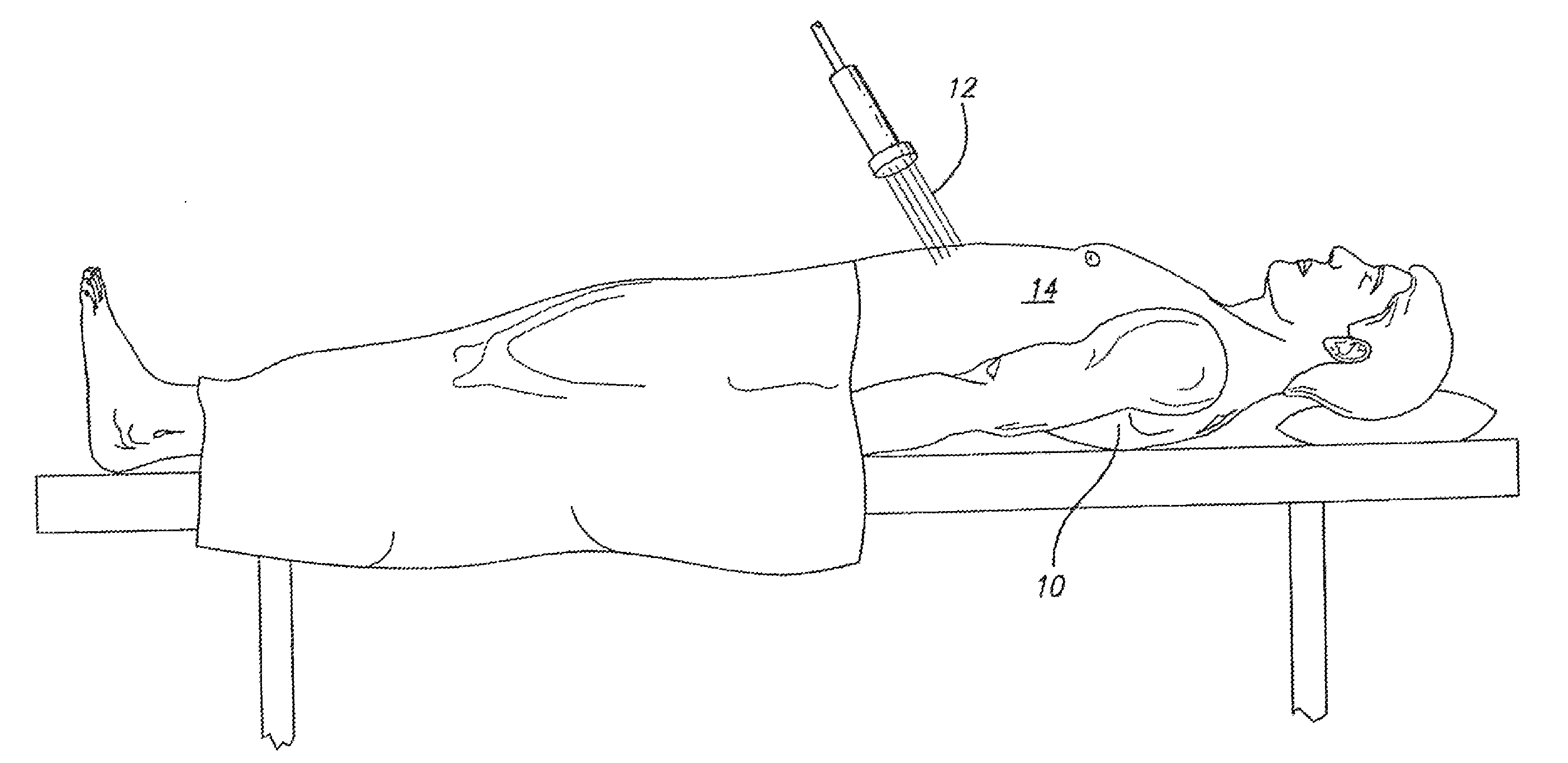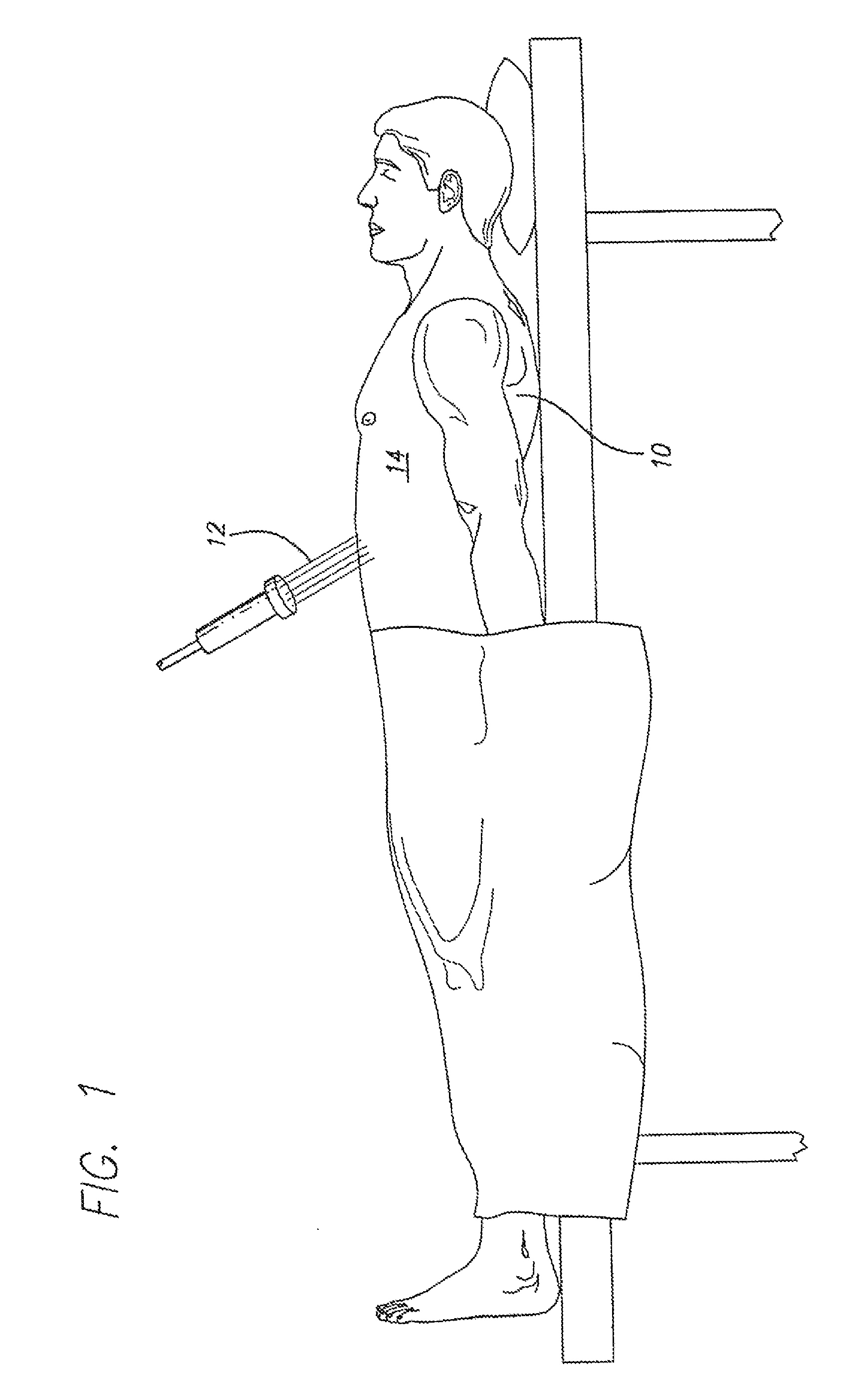Non-invasive method for slimming a human body using laser energy of wavelengths shorter than 632 nm
a human body and laser energy technology, applied in the field of non-invasive, non-destructive shaping and contouring of the human body, can solve the problems of weight loss, the effect of the procedure occurring over the body as a whole, and the risks of the procedure, so as to achieve the effect of reducing the measurement of the lasered area and overall body slimming
- Summary
- Abstract
- Description
- Claims
- Application Information
AI Technical Summary
Benefits of technology
Problems solved by technology
Method used
Image
Examples
example 1
[0028]A patient's waist was measured using a tape measure. The waist measured 100.9 cm in circumference. A 532 nm semiconductor diode laser with maximum power of 18 mW was used to apply laser light to a patient's pad of fat located on his belly of about 400 cm2. The laser energy was applied for 15 minutes in a back-and-forth sweeping motion across the fat area without touching the patient, applying about 16.2 J of laser energy. The patient's waist was measured again using the same tape measure. The waist measured 99.7 cm in circumference. The treatment was repeated again once a week for 4 more weeks. This non-invasive procedure produced the same amount of slimming in the targeted area as would be seen with treatment using red laser light for 20 minutes every day for two weeks, but had an additional benefit of slimming the patient's body overall. The patient suffered no pain or bruising.
example 2
[0029]A patient's thigh was measured using a tape measure. The thigh measured 62.5 cm in circumference. A 532 nm semiconductor diode laser with maximum power of 25 mW was used to apply laser light to an area of the patient's thigh of about 400 cm2. The laser energy was applied for 15 minutes in a back-and-forth sweeping motion across the fat area without touching the patient, applying about 22.5 J of laser energy. The patient's thigh was measured again using the same tape measure. The waist measured 61.5 cm in circumference and showed a decrease in visible cellulite. The treatment was repeated again every other day for 4 more weeks. This non-invasive procedure produced the same amount of slimming in the targeted area as would be seen with treatment using red laser light for 20 minutes every day for two weeks. The patient suffered no pain or bruising.
example 3
[0030]A patient's waist and neck were measured using a tape measure. The waist measured 100.9 cm in circumference and the neck measured 43.2 cm. A 440 nm semiconductor diode laser with maximum power of 25 mW was used to apply laser light to a patient's pad of fat located on his belly of about 232 cm2. The laser energy was applied for 15 minutes in a back-and-forth sweeping motion across the fat area without touching the patient, applying about 22.5 J of laser energy. The patient's waist and neck were measured again using the same tape measure. The waist measured 99.7 cm in circumference and the neck 42.5 cm. The treatment was repeated daily for the first week and every other day for the next week. This non-invasive procedure produced the same amount of fat reduction as would be seen with treatment using red laser light for 20 minutes every day for two weeks. The patient suffered no pain or bruising.
PUM
 Login to View More
Login to View More Abstract
Description
Claims
Application Information
 Login to View More
Login to View More - R&D
- Intellectual Property
- Life Sciences
- Materials
- Tech Scout
- Unparalleled Data Quality
- Higher Quality Content
- 60% Fewer Hallucinations
Browse by: Latest US Patents, China's latest patents, Technical Efficacy Thesaurus, Application Domain, Technology Topic, Popular Technical Reports.
© 2025 PatSnap. All rights reserved.Legal|Privacy policy|Modern Slavery Act Transparency Statement|Sitemap|About US| Contact US: help@patsnap.com



